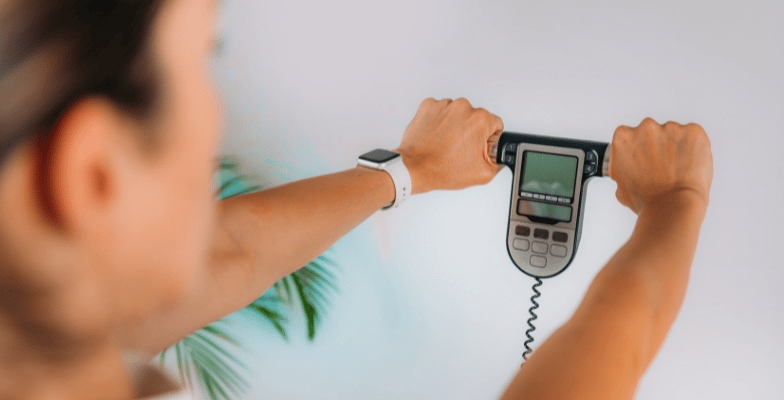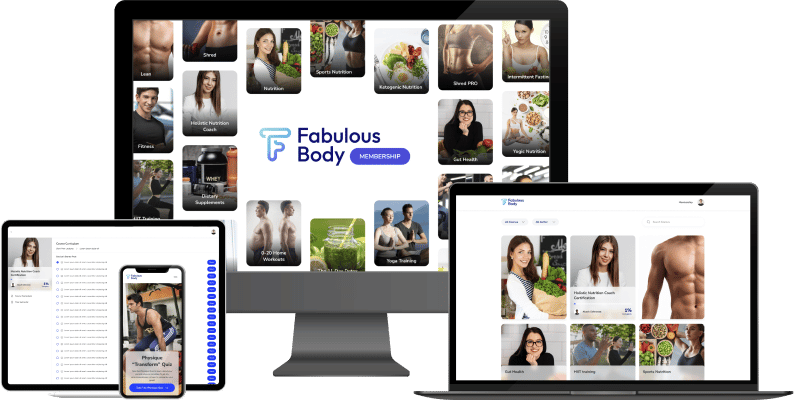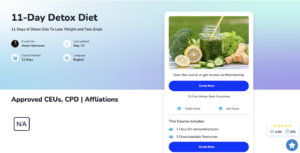Body Fat Percentage: 3 Ways To Measure It

Introduction
A person’s body fat percentage can define how he looks and how he feels about himself. Not just that, it is also a good indicator of whether or not you could potentially at a health risk.
It makes sense to be able to gauge your own body fat levels, but, how? You want to read this article if you want to know three ways on how to measure body fat percentage and even track it.
There are some more ways which are more accurate than the three I discuss in this post but do note that they are very expensive and inconvenient. I leave it up to you to decide.
3 Methods To Measure Your Body Fat Levels
1) Bioelectrical Impedance Devices
For about 8 years, I relied on this one method to measure and track body fat of thousands of clients who joined my gym.
I purchased 2 Omron Body Fat Monitors for INR 10,000 each almost a decade back and they have served me very well over the years considering the usage they went through. (They were used at least 50 times each day both in my gym and at marketing stalls).

How To Use These Devices
The process is very simple and takes less than a minute for the reading to display. Before a person steps on the machine (when using the full body scanner as opposed to a hand-to-hand as you can see in the above picture towards the right), her age, gender and height need to be fed in the machine.
The person then steps barefoot on the machine and also grips the handle with both his hands as shown in the picture:

How Does Bioelectrical Impedance Machine Work
The Omron Full Body Sensor Body Composition Monitor and Scale estimates the body fat percentage by the Bioelectrical Impedance Method.
Muscles, blood, bones and body tissues with high water content conduct electricity easily. On the other hand, body fat does not store much water, therefore has little electric conductivity.
The Omron Full Body Sensor Body Composition Monitor and Scale sends an extremely weak electrical current of 50 kHz and less than 500 μA through your body to determine the amount of water in each tissue. You will not notice or feel the electrical current.
The ratios of the water in your upper and lower body change throughout the day- as gravity pulls more water into your lower extremities. This means the electrical impedance of the body also varies – if more water is in your legs, other monitors such as foot-to-foot may show incorrect body fat readings.
The Omron Full Body Sensor Body Composition Monitor and Scale takes measurements from both hands and feet- which reduces the influence water movement makes on your body composition results.
That’s why if you want accurate readings you should buy the one where there are four electrodes, two for your legs, and two for your hands.
Lets quickly look at the ‘Key Numbers’ that Omron Bioelectrical Machines shows:
Visceral Fat
Visceral fat is found in the abdomen and surrounding vital organs. It is different from fat found directly underneath the skin, which is referred to as subcutaneous fat. Visceral fat can go largely unnoticed because it’s not visible to the naked eye.

Too much visceral fat is thought to be closely linked to increased levels of fat in the bloodstream, which may lead to conditions such as high cholesterol, heart disease and type 2 diabetes. In order to prevent or improve these conditions, it is important to try to reduce the amount of visceral fat levels to an acceptable level.
Note: Visceral fat levels are relative and not absolute values.
Body Age
Body age is based on your resting metabolism. Body age is calculated by using your weight, body fat percentage and skeletal muscle percentage to produce a guide to whether your body age is above or below the average for your actual age.
For example, if a person who is 35 years of age, and has overall body fat at 25% and visceral fat at 17, then generally his metabolic age would show at least 10 years more.
It was a great marketing tool for our health club, as it used to scare people into thinking that they are aging faster and they should start taking care of their workouts and diet to manage that. And they were the happiest when after few weeks (or months) their body fat lowered and so did their metabolic age. 🙂
Resting Metabolism
This is the number of calories you burn when you at rest. Calories required to support the beating of your heart, and other important functions required to keep you alive. Just imagine for 24 hours you simply sitting on a chair the whole day and doing nothing.
BMR is usually a person’s 60-70% of daily energy use. The rest of is through physical activity and diet induced thermogenesis. You don’t need to buy this machine to calculate your resting metabolism.
A very simple way you can do is by multiplying your body weight in pounds by 10.
If you are 170 lbs your resting metabolism is 170 x 10 = 1,700 calories.
Resting metabolism is also called BMR (Basal Metabolic Rate).
Akash, then what the heck is TDEE that you keep talking about?
TDEE- Total Daily Energy Expenditure is a simply a sum of your BMR + Activity Level + Diet Induced Thermogenesis.
Related Article: TDEE Definition: Total Daily Energy Expenditure
Is A Bio-Electrical Impedance Machine Accurate And Is It Worth Buying?
No! Unless you are a health club owner and need a fancy way to measure your client’s body fat. In that case, invest in the expensive one which I used, not the hand-held or the stand-on-one without the hand electrodes.
It’s important to note that there is a ‘recommended’ time during which you should use this machine.
Your numbers will be way off if you use the machine:
-After vigorous exercise, after a bath, steam or sauna
-After drinking alcohol or using any diuretics
-Around meal timings
This is because these things cause huge fluctuations in the water content in your body.
Here is a chart by Omron showing the ‘recommended timings’ to use their machine:

There is obviously a much cheaper way to do that and it’s surprisingly more accurate than this one. See No # 3, but before that let’s check out my favorite method.
2) Measuring Your Waist & Clicking Progress Pictures
This one is my favorite way of keeping track of my body fat levels. I guide my online Personal Training clients to do the same.
Here is what you should do:
-Wake up
-Get fresh
-Measure your waist from the navel. Do this 7 days in a row.

-Take out the average. That is your correct waist.
What about body fat? Forget about body fat percentage.
Just know this:
A clear visibility of your six pack will suggest you are less than 10%. Note if you have worked hard to make your abs blocky you can have a six pack at 10% otherwise, you need to do down to about 7-8%
Depending upon your genetics (wide/narrow waisted..determined by your skeleton structure), your waist will be between 29-32 inches at 8-10% Body Fat.
If you are wide waisted, you can only reach a minimal waist circumference of 31-32 inches. On the other hand, if you are narrow-waisted (like me…usually ectomorphs are) you can reach 29 inches.
Here is a chart I created for you. Although this might not 100% be accurate, I made this table when I went from 27% body fat with 38 inches waist down to 31 inches in less than 7 months:

Bloating, inflammation, gas, and food stuck in your intestines (yuck!) may cause some variations when trying to measure your waist. That’s why I have asked you to take the 7-Day average. You won’t be inflamed or gassy or even bloated for the entire week, will you?
But most people do chronically suffer from these issues and to them I would recommend to check out my 11-Day Detox Diet Course.
3) Body Fat Calipers
I’ll be honest. After I got off the bioelectrical machine after using it on my clients and myself for about 8 years, I simply relied on measuring my waist and the mirror as a guide. I never felt the need to use body fat calipers.
I’ll still give you a brief idea of how it works, and if you want to give it a try, go ahead it only costs about $5! If you want to use this method all by yourself (without anyone assisting you) then choose only one site to measure i.e. your abdomen. This is where most of your fat is stored.
Now pinch out the fat and use the tongue of the calipers to measure it. Note down the reading and use the chart that comes with the calipers to figure out your body fat percentage. Always remember, test the same site (abdomen) in same conditions (first thing in the morning) over time to figure out whether you are losing/gaining fat.
There are other and very accurate methods (which are considered gold standards) when it comes to measuring body fat percentages, like DEXA Scans, Underwater weighing & Bod Pods, but they can be very expensive (upwards of $100 each time) and I feel is futile for most of you reading this post, as it’s only reserved for few (who have hundreds of dollars to spare each time).
Final Verdict
Which is the best method to measure your body fat percentage?
Check out the body fat percentage chart for men and women below:


Can you see where you fit in?
I am sure you can zero down one range. Still thinking whether you look like the women at 26-29% or the one at 30-33%?
No problem, at least you have a range now: 26-33%
Now, if have a gym membership, chances are high that they have a bioelectrical impedance machine. Get yourself checked by following the recommended timings given above.
Note down the number. This will make things a little bit clearer. Now, go to Amazon and order a body fat caliper. Figure out the reading that comes. Tally it with the previous two.
Summary
Hey, even if you don’t have the exact body fat percentage, it’s ok. Not even those expensive methods like DEXA etc. are spot on!
Idea is to figure out a body fat percentage range, narrow it down & then use the same method in the same conditions over time to see if it’s going down or up.
If you still ask me, which is THE method to track and progress one’s body fat percentage, I’ll go with #3.
If you still having a tough time trying to figure out your body percentage I am here to help you. Upload your picture in the comments below and let me help you out.

Skill-Based Education.
Global Recognition.
Powerful Community Building
Secure a certificate of completion in as little as a day by graduating from one of our free courses.
Get Access to Our Free Courses. No Credit Card Required.

Fabulous Body Membership
Your All-Access Pass to A Fabulous Body & A Rewarding Career
25+ Certificate Courses & Programs, All Included
15 Day Free Trial, 100% Money-Back Guarantee
About Akash Sehrawat
Akash is a creator of 25+ programs and certificate courses in which more than 200,000 students have enrolled both on Udemy and Fabulous Body's native platform. Akash is also an author of three books that can be found on Amazon. His answers on Quora have gathered more than 12 million views in less than a year.











This is the most insightful training I have had in a long time. I am so happy i signed up for this.
Please help me to figure out my body fat percentage
If you are 170 lbs your resting metabolism is 170 x 10 = 1,700 calories.
Explain this sir….
Hey Ajay, this is the calories you burn at rest. Imagine yourself sitting on sofa and doing nothing the entire day!
Hey Ravinder, This video will give you a good idea: https://www.youtube.com/watch?v=EjASaHlo8fY&t=149s
The level of knowledge you provide to us , it’s just like your body… fabulous and interesting too 🙂 …. I really appreciate your teachings !!
Instagram – healtharena33
– Hammad Rashid –
Thank you Muhammad:)
For Fat loss they say one needs to be in calorie deficit. So Calorie deficit is calculated in reference to BMR ? if I am 170lbs – for fat loss should i be eating less than 1700 calories only or any other consideration should be done as well.
Also do we add the calories burnt during the workout session to BMR?
Hey, You need to figure out your TDEE first and then create a deficit. Eating 20-30% less than TDEE is best for fat loss. You can use our TDEE calculator: https://fabulousbody.com/free-tdee-calculator-%E2%80%8B-how-to-calculate-tdee
First of all can I say that I am loving your Diploma course in diet management.
Quick question, could I put my client for the first phase (month one) on the aggressive diet 90/10 so they achieve quick fat loss results, then phase two adjust to the realistic diet of 80/10 and finally phase three adjust to enjoyable diet of 70/30?
Would the results be similar to my client following the realistic diet throughout the whole 3 months?
Any reasoning for or against adjusting the phasing?
Thank you for your time.
Anna
Hi Anna,
We are glad to know that you liked the course.
To answer your wonderful question, yes, you can start your client off with a 90/10 approach, however, it may not be so easy for your client stay on a super strict regime for day 1.
Eating right means a lot of changes in one’s eating habits and someone used to breads, spreads and sauces doesn’t find it easy to switch to 4-5 servings of fresh fruits and vegetables daily along with changed cooking methods and ingredients.
A lot of people give up on their diet in the first two weeks if it is too strict. It will be best to discuss this with your client beforehand and get an agreement from them after they understand what they’re agreeing for, it’ll help them stick to it.
80-20 may be a better approach to begin with and they will still lose fat because they will consume much lesser calories now than they used to on your planned intake.
Simple example, if you put them on a 1500 calories diet and they are allowed no more than 300 calories for junk as 20% of total calories, you successfully cut out a lot of risky options like milkshakes and large burgers anyways. All of this while the rest of intake is clean.
I hope this answers your question:)
Regards,
Kunal,
Team Fabulous Body
thanks for this information
Hi Sarabjit,
You’re most welcome.
Regards,
Kunal,
Team Fabulous Body